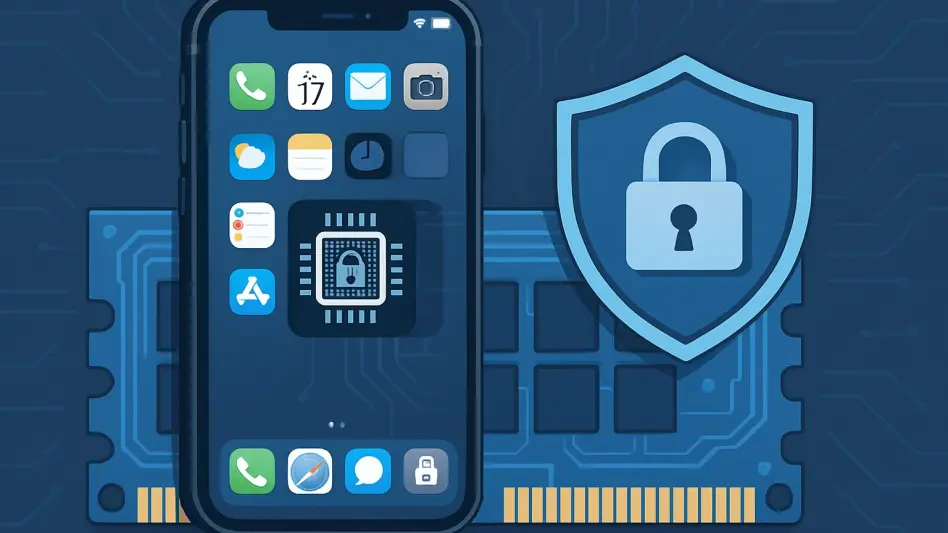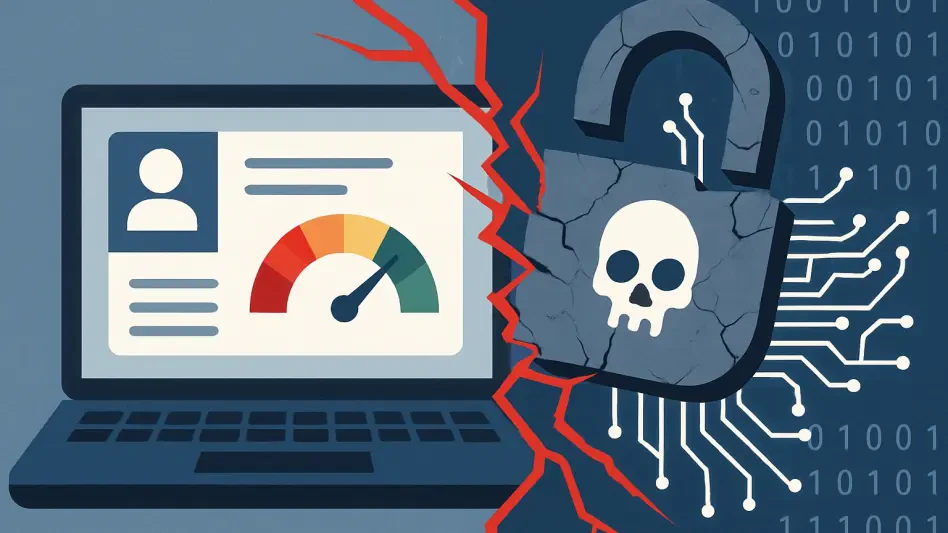In a digital era where cyber threats loom larger than ever, Apple has unveiled a groundbreaking advancement in mobile security with the launch of the iPhone 17 and iPhone Air, featuring a technology known as Memory Integrity Enforcement (MIE). This innovative safeguard targets one of the most exploited weaknesses in modern devices—memory corruption bugs, which are frequently weaponized by spyware developers and surveillance vendors to infiltrate systems. Nestled among a slew of product announcements, MIE emerges as a pivotal development, promising to fortify user protection against sophisticated attacks. By addressing a critical vulnerability that spans across platforms, Apple aims to set a new benchmark in device security, potentially making these latest iPhones some of the most resilient internet-connected gadgets available today. This move underscores a growing urgency to combat the relentless evolution of cyber espionage, positioning Apple at the forefront of the battle for user privacy.
Diving Into Advanced Security Features
Unpacking the Mechanics of MIE
Memory Integrity Enforcement represents a sophisticated leap in Apple’s security architecture, building on the foundation of Arm’s Memory Tagging Extension (MTE) and refining it into what the company calls Enhanced Memory Tagging Extension (EMTE). Developed over recent years, this technology assigns a unique secret tag to each segment of memory within the iPhone 17 and iPhone Air, functioning much like a digital password. Applications must possess the correct tag to access specific memory areas, ensuring that unauthorized attempts are thwarted. This mechanism not only prevents malicious code from infiltrating sensitive data but also creates a robust barrier against memory overflow exploits, a common tactic used by attackers. By integrating this feature directly into its hardware and software ecosystem, Apple leverages its tight control over both elements to deliver a seamless and powerful defense strategy that few competitors can match in depth or execution.
A standout aspect of MIE is its crash-and-log functionality, which adds an additional layer of protection by actively monitoring access attempts. When an unauthorized application tries to breach a memory segment without the proper tag, the system forces the app to crash, halting the potential attack in its tracks. Simultaneously, the incident is logged, providing valuable data for cybersecurity teams to analyze and identify patterns of malicious behavior. This dual approach not only mitigates immediate threats but also aids in long-term defense by enabling proactive measures against emerging exploit techniques. Such a feature is particularly crucial for apps like Safari and iMessage, which are pre-configured with MIE and often serve as entry points for spyware. This technical innovation reflects a meticulous effort to stay ahead of attackers who continuously seek new ways to exploit vulnerabilities in mobile devices, marking a significant shift in how security is implemented at the core level.
Comparing MIE to Industry Standards
When placed alongside security measures on other platforms, MIE stands out due to Apple’s unique ability to integrate hardware and software solutions cohesively. While Google has implemented MTE on select Android devices, and specialized systems like GrapheneOS also adopt similar protections, experts argue that Apple’s tailored approach with EMTE offers a more comprehensive shield against memory-based attacks. This advantage stems from Apple’s end-to-end control over its ecosystem, allowing for optimizations that are challenging for fragmented platforms to replicate. As a result, the iPhone 17 could redefine expectations for what constitutes a secure mobile device, pushing competitors to elevate their own standards in response to this technological stride. The emphasis on memory integrity positions Apple as a leader in preempting threats that have long plagued the industry.
Moreover, the broader implications of MIE extend to how it reshapes user trust in mobile technology. With memory corruption bugs being a primary vector for high-profile spyware attacks, Apple’s focus on this area addresses a pressing concern for individuals and organizations alike. Unlike other systems where security updates may lag or depend on third-party cooperation, MIE’s default activation on core applications ensures immediate impact for users of the latest models. This proactive stance contrasts with the often reactive nature of industry responses to cyber threats, highlighting a forward-thinking approach. While not every device or app will benefit instantly due to adoption timelines, the precedent set by MIE could catalyze a wider movement toward prioritizing memory safety across all digital platforms, influencing future innovations in the tech landscape.
Assessing the Ripple Effects on Cybersecurity
Challenges for Spyware Developers
The introduction of MIE is poised to significantly disrupt the spyware and surveillance industry, as predicted by numerous cybersecurity experts. By fortifying the iPhone 17 against memory corruption vulnerabilities—a favored exploit method for mercenary spyware vendors—the technology raises the bar for developing effective hacks. The complexity and cost of crafting new exploits are expected to surge, potentially leaving some vendors without viable tools to target these devices upon release. This temporary gap in capability could offer users a critical window of enhanced security, as malicious actors are forced to invest substantial resources into overcoming MIE’s defenses. Such a shift may deter smaller or less-funded players from targeting Apple’s latest models, altering the dynamics of the exploit market in favor of user protection.
Beyond the immediate financial burden on spyware developers, MIE’s impact could reshape the strategic priorities of surveillance vendors over time. With each memory segment locked by a unique tag, the traditional methods of exploiting memory overflow bugs become far less feasible, compelling attackers to explore alternative vulnerabilities or entirely new attack vectors. Cybersecurity researchers note that while this adaptation will occur, the initial disruption caused by MIE may slow down the deployment of new spyware campaigns aimed at iPhone users. This development is particularly significant for high-risk individuals such as journalists or activists, who are frequent targets of state-sponsored surveillance tools. Although not a permanent solution, the heightened difficulty introduced by MIE marks a notable victory in the ongoing struggle to secure mobile environments against persistent digital threats.
The Evolving Nature of Cyber Threats
Despite the formidable barrier posed by MIE, the cybersecurity landscape remains a battleground of constant adaptation, often described by experts as a “cat-and-mouse game.” Attackers, driven by the lucrative demand for exploits, are unlikely to be deterred indefinitely by even the most advanced defenses. Well-funded spyware developers and forensic tool creators are expected to persist in their efforts to bypass MIE, investing in innovative techniques to counteract Apple’s memory protection mechanisms. This relentless pursuit underscores the reality that no security feature can claim to be entirely impenetrable, as each advancement on the defensive side inevitably sparks a corresponding evolution in offensive strategies. The dynamic nature of this conflict ensures that vigilance remains essential, even with cutting-edge protections in place.
Additionally, the economic incentives fueling the spyware market add another layer of complexity to the threat environment. As long as there exists a willing buyer base—ranging from governments to private entities—there will be developers ready to supply tailored exploits, regardless of the obstacles posed by technologies like MIE. Experts caution that while Apple’s latest feature may temporarily outmaneuver certain actors, the high stakes and potential profits will continue to attract sophisticated adversaries. This persistent drive for circumvention highlights the need for layered security approaches that go beyond single solutions, incorporating regular updates, user education, and complementary defenses. The introduction of MIE, therefore, serves as a critical, yet not conclusive, step in mitigating risks within an ever-shifting digital battleground where threats continuously evolve.
Navigating Implementation and Reach
Barriers to Widespread Adoption
One of the primary challenges facing MIE is its dependency on third-party app developers to integrate the technology into their software, a process that could significantly delay its ecosystem-wide effectiveness. While core Apple applications such as Safari and iMessage come with MIE enabled by default, recognizing their status as frequent targets for spyware, many other apps critical to user experience will require individual updates to adopt this protection. This staggered implementation means that vulnerabilities may persist in widely used third-party platforms until developers prioritize compatibility with MIE. Such a delay could limit the immediate impact of Apple’s security innovation, leaving gaps that attackers might exploit in the interim. The pace at which developers embrace this feature will play a crucial role in determining how quickly MIE can fortify the broader iPhone environment against memory-based threats.
Furthermore, the gradual nature of user adoption presents another hurdle for MIE’s comprehensive rollout. The advanced security benefits are exclusive to those who upgrade to the iPhone 17 or iPhone Air, meaning that millions of users on older models remain exposed to the same memory corruption risks that MIE aims to address. This limitation underscores a broader challenge in cybersecurity: ensuring that cutting-edge protections reach a critical mass of users swiftly enough to outpace evolving threats. For individuals unable or unwilling to invest in the latest devices, alternative security measures must suffice, potentially creating a disparity in protection levels across Apple’s user base. Until a larger proportion of users and apps align with MIE’s framework, its transformative potential will unfold incrementally, highlighting the complexities of implementing systemic security upgrades in a diverse and expansive digital ecosystem.
Looking Ahead to Security Milestones
Reflecting on the strides made with MIE, it’s evident that Apple took a decisive step forward in the fight against digital espionage by embedding this technology into the iPhone 17 and iPhone Air. The focus on neutralizing memory corruption vulnerabilities tackled a pervasive issue that had long enabled spyware and surveillance tools to compromise user privacy. Experts lauded the initiative for its potential to disrupt exploit markets, as the increased complexity and cost of attacks likely sidelined less capable adversaries temporarily. The crash-and-log mechanism proved particularly effective in not only blocking unauthorized access but also aiding defenders in tracking malicious attempts, setting a high standard for mobile security that competitors observed with keen interest.
Moving into the future, the path to maximizing MIE’s impact lies in accelerating both developer integration and user upgrades to newer devices. Encouraging third-party apps to adopt this protection swiftly will be paramount, as will initiatives to make advanced security accessible to a wider audience through future models or updates. Additionally, continuous refinement of MIE to counter emerging bypass techniques should remain a priority, ensuring that Apple stays ahead in the relentless cybersecurity arms race. Collaboration with the broader tech industry could further amplify these efforts, fostering standards that elevate memory safety across platforms. As the digital threat landscape evolves, MIE lays a robust foundation, but sustained innovation and adaptation will determine how effectively it shapes the long-term defense of user data against ever-persistent cyber adversaries.








